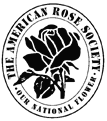 ARS Pacific Northwest District
ARS Pacific Northwest District
Coastal Roses
By Corinne Clifton,
Southwestern Oregon Rose Society
It's difficult to limit the list of the best
roses for the Oregon south coast to 10 because when roses do well here,
they do really well. When they do poorly, they do really poorly.
Gemini features a creamy white center
and outer petals outlined with pink. It resembles those other white and
pink roses, Pristine and Lynn Anderson. It is a blooming power-house
in comparison with either of those roses. It is often in exhibition form
and can grow quite tall. I have never seen a bit of disease on either of
mine.
Elina is one of the best roses for the
south coast. With our cooler temperatures, the light yellow color lasts
and lasts. At times my one bush, which is growing on its own roots, has
been covered with more than two dozen blooms in various stages. This rose
can often top out at 6 feet in height and more than 4 feet in width. It
is also very disease resistant, sometimes bothered by black spot in the
early spring or powdery mildew in the late summer. The bush shrugs off
the disease and keeps on growing. A regular spray program keeps it
looking and growing its best.
Olympiad also shines on the south
coast. Its brilliant red blooms can be seen from quite a distance. Their
substance is such that they last on the bush for a very long time.
Olympiad appears to be one of those roses which can take a few years to
establish, but when it does, watch out. It is spectacular.
Livin' Easy can also grow quite large.
My own-root rose last year was easily 4 feet high and 4-feet wide. It had
been moderately pruned and responded with more blooms than I could count.
The bright orange blooms gradually fade to a salmon with yellow centers.
It is also very disease resistant and is rarely troubled by more than a
slight case of black spot.
On the south coast Betty Boop truly
shows its colors. In warmer climates, rosarians complain it is colorless
and blows too fast. In our cool summers, the colors are bright, vibrant
and sassy, just like the Betty Boop herself. A single, this rose lasts
for days on the bush, gradually fading to a white edged with cherry red.
It can also grow quite large and could be grown as a hedge.
Sheila's Perfume may be more fragrant
in warmer climates but its blend of orange, pink, salmon, peach and yellow
is spectacular here. I've seen a dozen blooms open at once and last for
days. Not as disease resistant as others I've mentioned, Sheila's
Perfume will recover and continue to grow and produce outstanding
blooms for many years. Mine was heavily infested with downy mildew but
survived to tell the tale.
Lavaglut is, unfortunately, difficult
to find, which is too bad as no garden should be without at least one.
Its huge clusters of bloom last up to 10 days on the bush. At times, it
is difficult to find the bush under all that bloom! Another own-root
rose, Lavaglut is not big, rarely growing more than 2-feet tall and
as wide, but it is a bloom powerhouse.
The real jewels of the south coast garden are
the David Austin English roses. Our climate is so similar to the Austin's
home in England, it is too bad the roses are not more widely grown. They
are not hybrid teas, do not grow like hybrid teas, and should not be
expected to bloom like hybrid teas. They are truly in a class of their
own.
I grow more Austins than any other class of
rose and find it difficult to limit my list to three. These roses
require patience to allow them to establish themselves in the garden, but
when they do they reward the rosarian with tons of bloom. They require
very little care other than water and a regular fertilizer program. I do
not spray mine beyond the first two or three weeks of early spring.
The three best in my garden are Graham
Thomas, Golden Celebration, and Morning Mist. Graham
Thomas and Golden Celebration are more widely known and grown.
Morning Mist is a single rose, bright pink, and a huge rose when
established. It grows 8- to 10-feet high and about 5- to 6-feet high. As
far as I know, it is available only from David Austin Roses in Texas but
it is one rose that should be in more gardens. It is a true landscape
shrub and could easily be grown as part of a shrub border.
Articles Home
PNW District Home Updated
July 02, 2004
Copyright © 2004 ARS Pacific Northwest District
|
 ARS Pacific Northwest District
ARS Pacific Northwest District
 ARS Pacific Northwest District
ARS Pacific Northwest District